How Slack Built its Culture: Part 3
Zooming in on culture. Finding ourselves in a crisis not to be wasted. Spreading signs. Struggling with paying people in Sales.
Okay, yeah, sure, Slack’s culture was great. It started with the Four Slack Attributes. Then we put the Six Slack Values into place. Everything must have been aligned, just so. Put the words on the wall and they’re real.
Except.
Except as strong as the the official communication felt and as much work as there was put into them and as right as they felt in the abstract, the best way to show Slack’s culture is tell you how it showed up in daily life. How did we celebrate specific behaviours? What did we just tolerate? And what happened between those two poles?
Basically: how did we make the Six Slack Values (Thriving, Playfulness, Solidarity, Craftsmanship, Empathy and Courtesy) intentionally real for people in their work?
Because we were already doing stuff, lots of stuff. So how did those things align with what we’d decided were our values? For example, when I looked at how we hired the first 5 sales people at Slack, I think we were close but also needed to tweak our process.
In this chapter I want to tell a few more stories that I think reflect Slack’s culture in action. How did the stuff we did align with our stated values (or not)? How did the culture come alive (or not) in the decisions we made, practices we followed, and rituals that recurred? Yes, those stories. At the top of each subsection I’ll try to connect the story to the Values it reflects.
But first: Do you feel uncomfortable about all this culture talk? I know I do. It’s all a bit imprecise and loose and tough to pin down.
I hear a lot of folks invoke the ideas of culture and my impression is that a lot of them mean different things with their invocation. Sometimes it’s the feel or vibes of a place. Sometimes it’s habits or practices or personalities of specific people or teams. I want to get more specific and tangible.
One of my favourite books on culture is called The Culture Code by Daniel Coyle. In it, Coyle defines culture as “a set of living relationships working toward a shared goal. It’s not something you are. It’s something you do.”
That works for me. So let’s dig into how Slack did things.
The Mission: S > P > P
Our mission is to make your working life simpler, more pleasant and more productive. That’s what we said at Slack, right from the beginning, when 8 surviving members of the Glitch team set out to commercialize a team communication system they used for their own work.
In practice, the mission often got shortened to S > P > P, and we really did strive to live up to it in two key ways:
Externally facing with customers in proposals, communication, presentations, etc;
Internally facing with teammates in processes, interactions, daily life, etc.
Folks would often frame a change as an attempt at S > P > P. We referred to it frequently and it informed how we thought about how we did things. And truthfully, because everyone knew the mission, and repeated the mission, it set a standard for how we sought to do things.
The Slack mission always struck me as a clear, pretty modest mission, without an end. I’d say it wasn’t perfect but it worked pretty well, and in that status it reflected Slack overall. We weren’t perfect but we worked pretty well.
Never Waste a Crisis
Values connected: Empathy, Courtesy, Solidarity, Craftsmanship.
What happens when one of the the worst thing that could happen to your company does happen to your company? When the fear people may have had about your service becomes real? That’s the question we had to answer in late March, 2015. And our company depended on the answer.
Slack had suffered a security breach. Someone had hacked in, maybe. Something was suspicious, at least. It was big news to us and to the world. To put a finer point on it, we faced 2 critical threats:
Customer trust. People had trusted us with their internal communication. What had been compromised? How did we know? How could they still trust us?
Brand integrity. Slack had been the cute, playful app with emojis. As a result, the natural criticism we had to combat was Slack was not serious. It was unreliable, a toy, not enterprise ready. How could we fight that perception without losing our delightful appeal?
I remember I first heard about the breach in private messages. Something security-wise had happened. Our team were working as intensely as possible tracking down the problem. Could I work with our communications team to represent our customers and build a proactive plan?
Stewart led the effort. Internally, he started with a paraphrase of Winston Churchill’s famous line, “Never let a good crisis go to waste.” We got our story straight and our strategy mapped out. Then we went out to customers first and the media second, both proactively with the following outline:
Here is what we know today and what we’re doing to determine more.
Here is the narrow scope of what has been affected and who should be concerned. These people have all been contacted and remedies are in place.
Here is what everyone can do with new features we are releasing today for security (two-factor authentication, tools for team administrators). More are coming very soon.
Throughout the incident our Values were tested. I know because a big part of my job was telling customers about the breach. Those were hard calls, but necessary. We knew this was our chance to stand up and take responsibility (Empathy). Be direct and clear and quick (Courtesy). Apologize with details (Solidarity). Be precise and professional to lay out next steps (Craftsmanship).
It required a combination of leadership from the top, technical expertise, sales acumen and crisis communications, both internally and externally. It changed how we did things at Slack and, in hindsight, it could be argued it proved a good thing because it made us grow up. As painful as that felt. Sometimes you have to touch the stove to find out it’s hot.
What Good Shall I Do This Day?
Values connected: Thriving, Courtesy
Affirmations matter, especially when confronted every day. As Daniel Coyle says in The Culture Code, “narratives create shared goals and values.” In addition to the canonical stories we told for each value and adapted to our respective teams, here’s another way we reinforced how we did things at Slack: signs.
I found this sign from a small e-commerce brand called BestMade Co. It’s a Benjamin Franklin quote, the first question he asked himself every morning. I thought it felt right for Slack so I bought two. I imagined one up in our Vancouver office and another in San Francisco.
When the package arrived I showed it to Stewart. I felt pretty sheepish handing it to him, and I’m sure I couched my idea as a gift, with an escape if he didn’t like it. But he did like it and up it went in Vancouver and in SF.
Gradually we opened new offices and each one got their own copy of the sign. The phrase even made it into the Slack app.
The sign didn’t change the world. But it hung at the door way or in a hall in each Slack office, greeting folks with a daily challenge. Perhaps it helped nudge us a little bit in positive directions every day when we read it.
Paying Sales People
Values connected: Solidarity, Thriving
When we started hiring people for sales-type roles at Slack, when we still called the function Accounts and were just getting started, those people got paid just like everyone else at Slack: regular salary.
This was not externally how sales people got paid in software. The usual was called variable compensation, or compensation based on performance, or, simply, quota. It was pay for performance. The employee got a modest regular salary and scaled variable payments for how much business they closed. A base regular salary might be $60,000 and the variable compensation an additional $60,000 for hitting the sales target, to get to a total compensation of $120,000.
Sales people are coin operated, I kept being told. They expect to be paid. Their motivation needs to be quantified with money incentives. Really? I wondered. That seems contrary to all the social science I had encountered. What about Autonomy, Mastery and Purpose, the 3 key elements of motivation outlined in Drive by Dan Pink:
The central claim of the book is that higher pay and bonuses result in better performance within the workplace only if tasks consist of basic mechanical skills. If the task involved cognitive skills, decision-making, creativity, or higher-order thinking, higher pay resulted in lower performance. Pink suggests, "You should pay enough to take the issue of money off the table".
The Drive model of motivation seemed truer and more scalable to me. I wanted to pay people in all roles for the work they did, and pay them well, and not create and administer (and haggle over and adjudicate between) special rules for sales people. We started our Accounts team this way.
But we had a mismatch between what we offered and the industry standard. This mismatch created a tension — moreso with prospective new employees used to variable compensation than with existing employees at Slack. After a few years, as our sales process evolved and we brought in more leadership and experience, we shifted to an industry-standard model of variable compensation.
We never ran both compensation models simultaneously, so we didn’t have any kind of A/B test for what kind of compensation worked best for sales people. What could have happened if we’d stuck with our original model? It’s impossible to say. We may have topped out with the talent we could acquire. That was the main fear that drove the change to variable compensation. But I would have liked to see us stick with the standard compensation model for longer.
Callowe’en
Values connected: Solidarity, Playfulness.
The celebration of Callowe’en predated my arrival at Slack and predated the creation of Slack. It seemed as if there had always been a Callowe’en.
So what was Callowe’en?
It was Hallowe’en but everyone dressed as Cal Henderson, Slack’s CTO, and a man dedicated to a personal uniform of khaki cargo shorts, gingham short-sleeved shirt, black-framed glasses. It was a celebration of the consistency of Cal.
Steady as the north star, Cal Henderson always was the CTO of Slack. He’d been the CTO of Flickr. He was part of the core team of founders with Stewart, Eric and Sergei. No one ever wondered what he’d done to get the job of CTO. He was pretty much always the smartest person in the room.
If you didn’t know any better, you might underestimate Cal. He wasn’t flashy or showy. He wasn’t brash or demonstrative. He was English and bearded. Physically and intellectually Cal was built for heavy work. The shorts he wore every day revealed thick calves that could have belonged to a rugby player. His capacity for workload, technical complexity and critical thinking was immense.
I think he knew he was special in many ways, but his manner was to pretty much scoff off any effusive praise. Sure, he might have known it, but he had no time for it. What could it be good for anyway?
Being able to celebrate that modesty and dedication to excellent hard work created a really powerful ritual at Slack. For one day, we were all Cal.
Up next — Eee Mee Yah: Europe calling, early. Familiarizing in Dublin. Landing in Ireland. Learning the lingo. Deciding on Dublin.


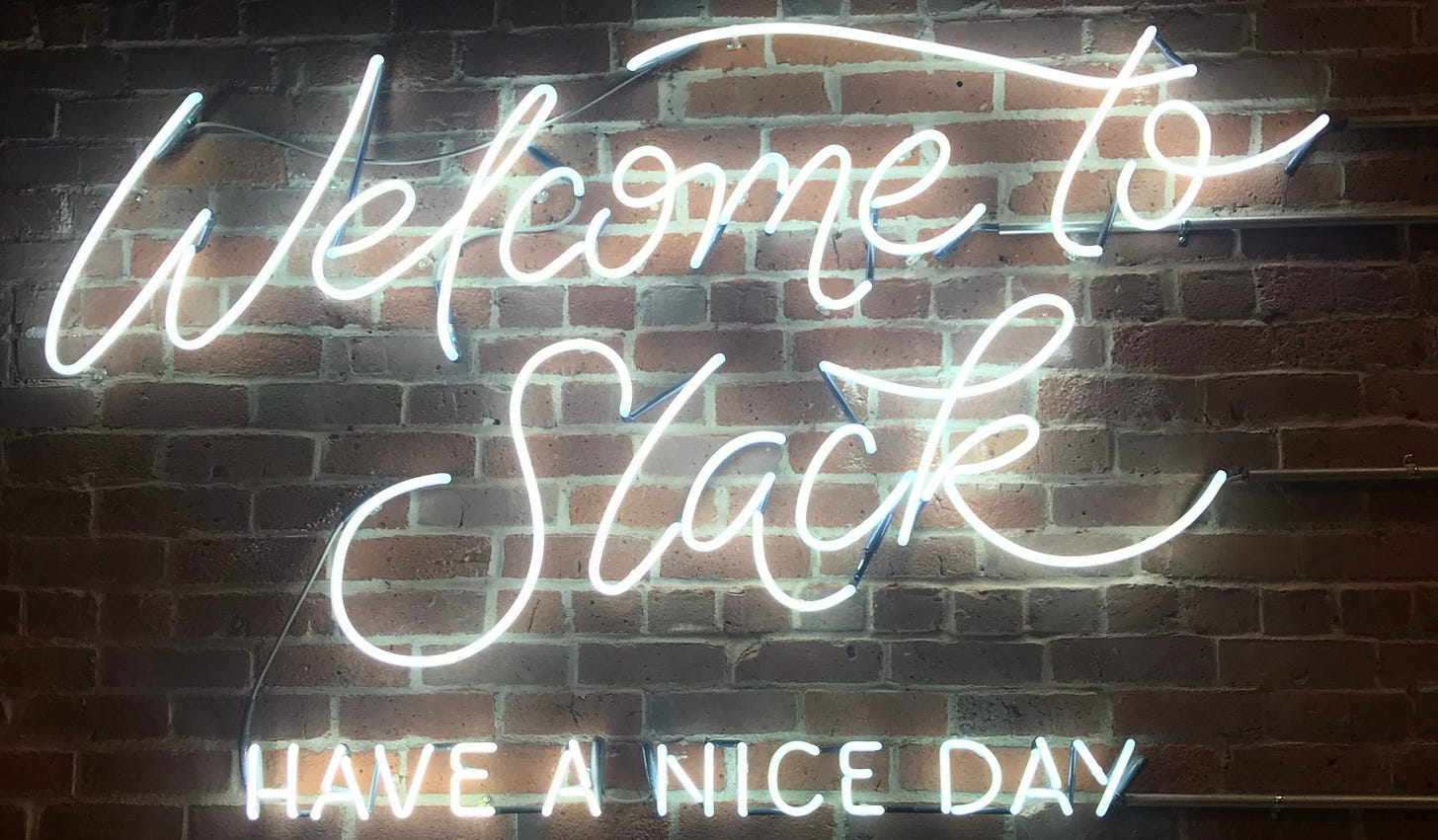


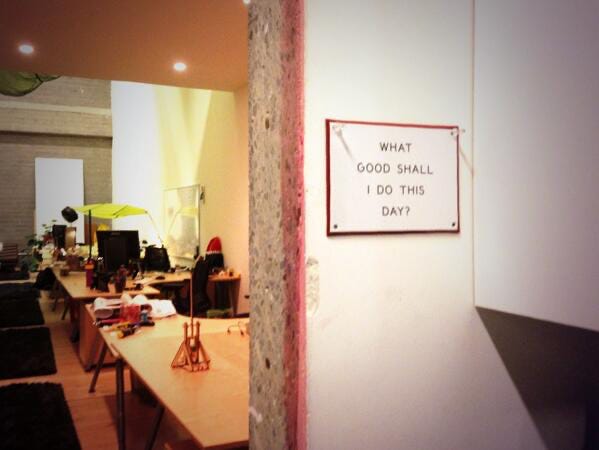
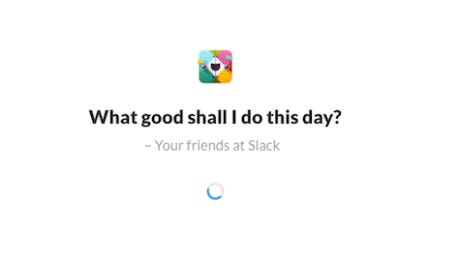
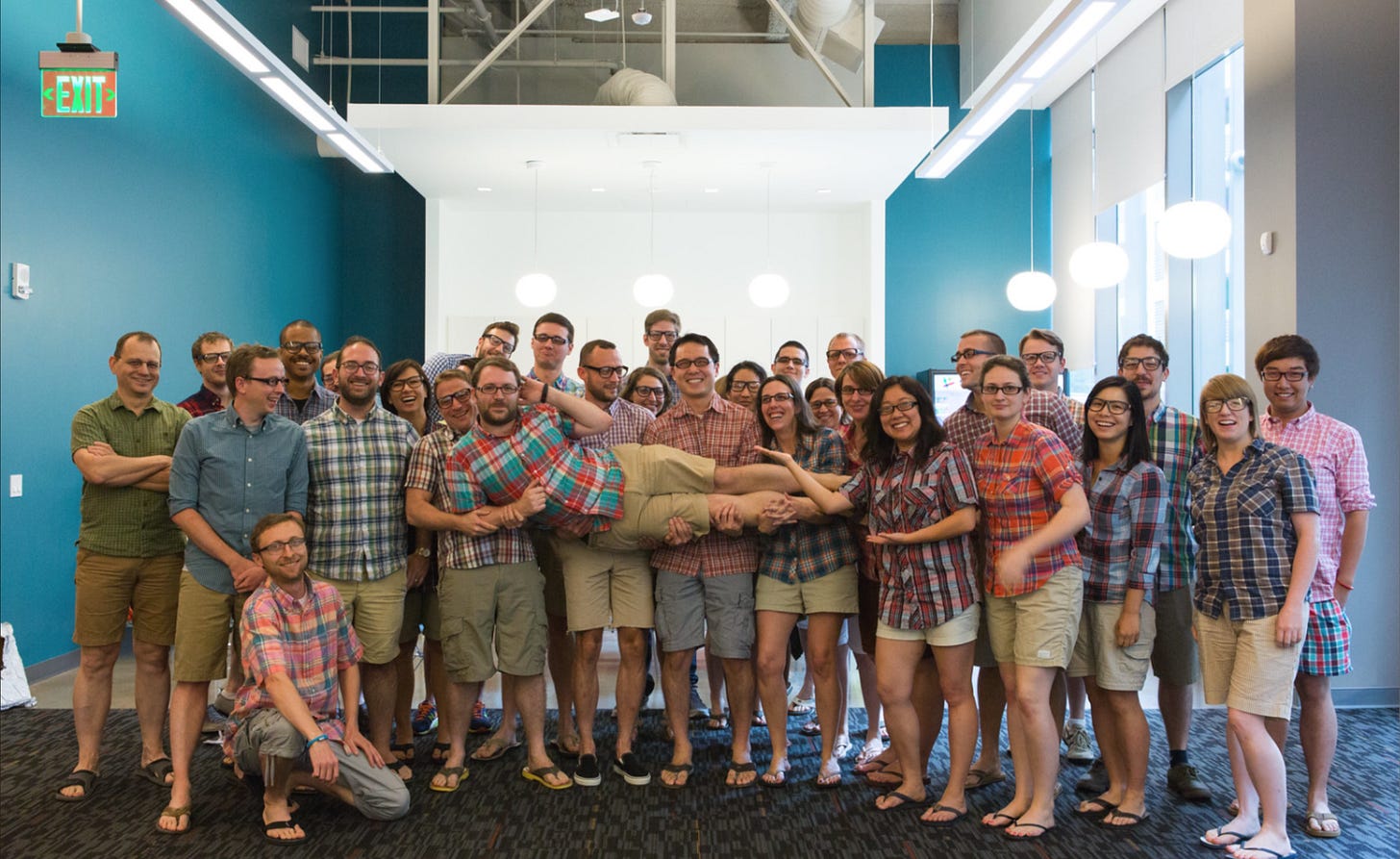
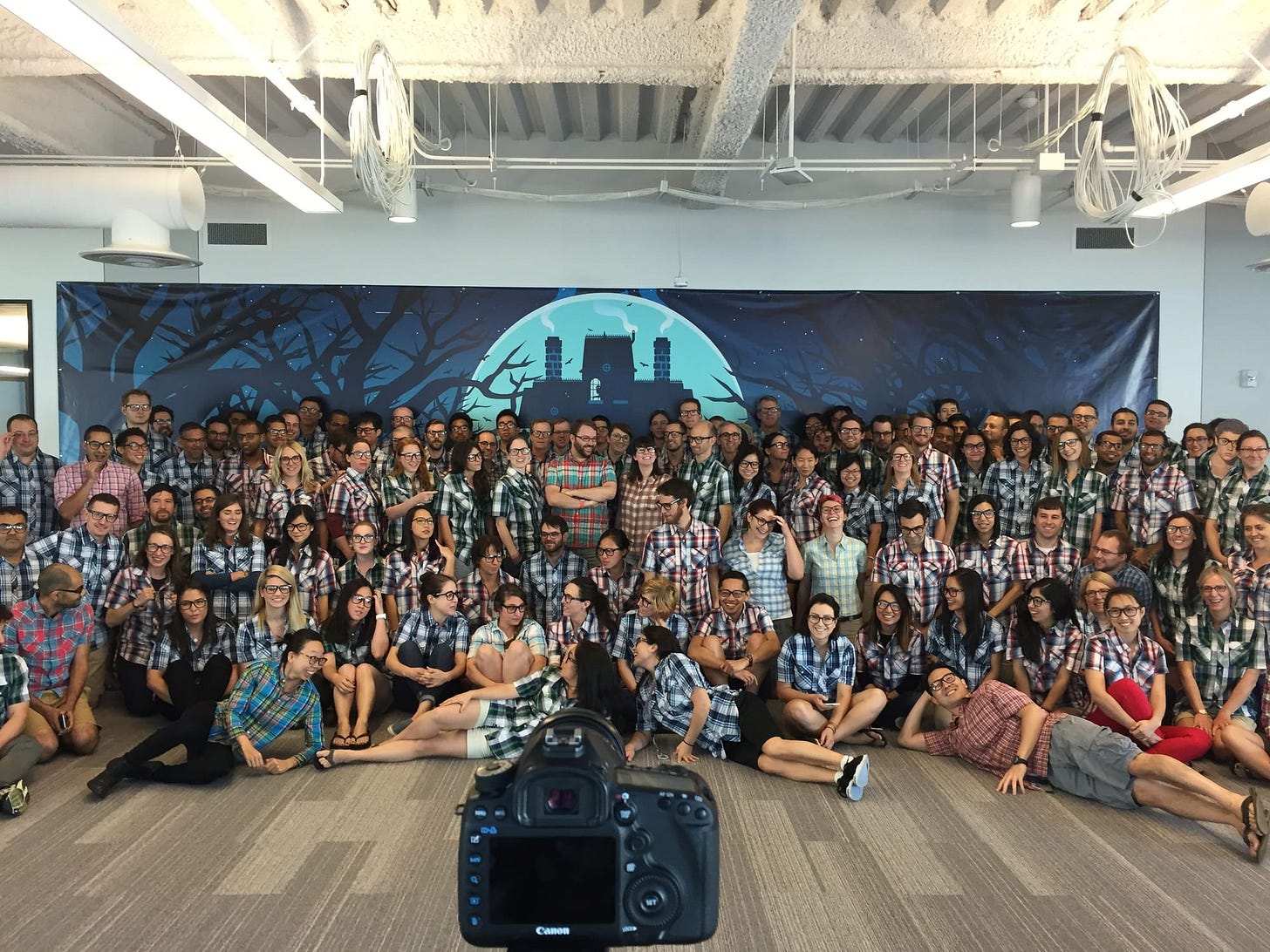
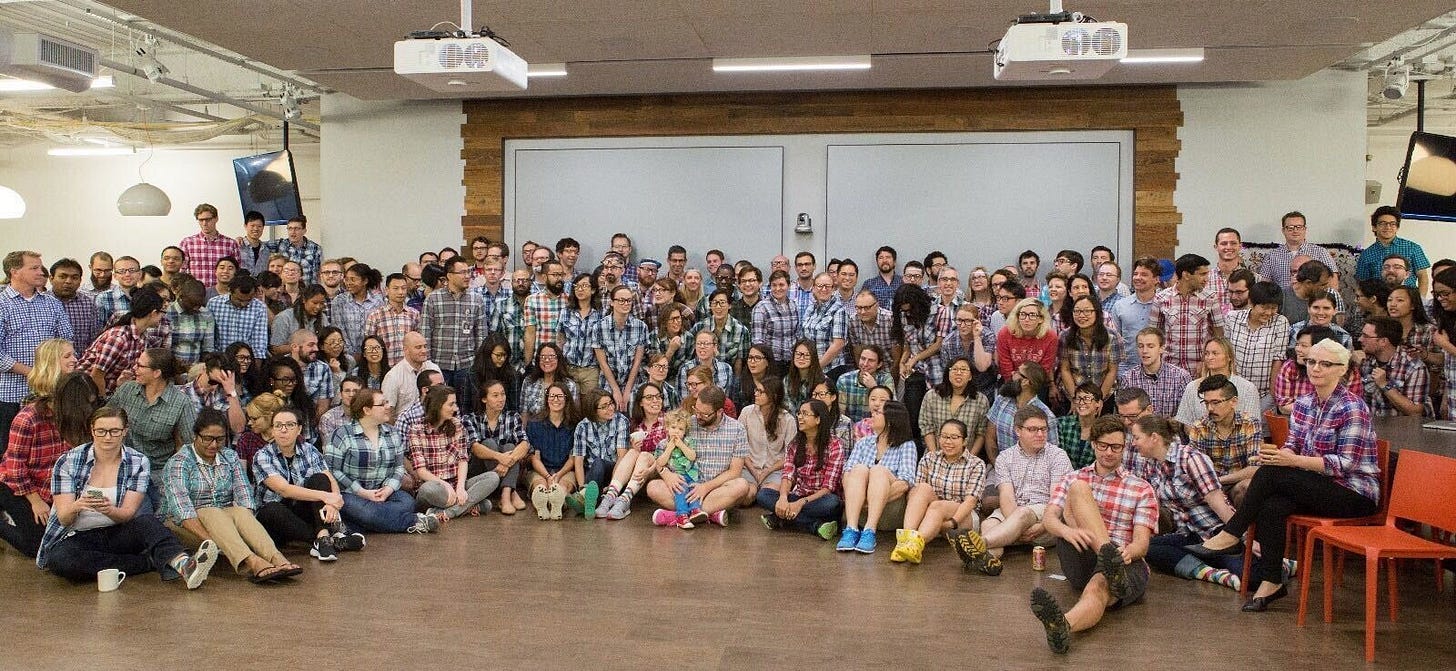


This one left me with "eye allergies." A few things - 1. Previous to Slack I worked at a company called Bolt Threads (synthetic spider silk), which had recently acquired Best Made Co. My favorite saying was on that sign. When I stepped up to the reception desk at 155 5th St and saw my favorite enamel sign, I had a feeling my life was about to change. 2. You nailed the description of Cal. His humility and "get to work (but also have a LOT of fun doing it)" attitude enabled us to do our best work.